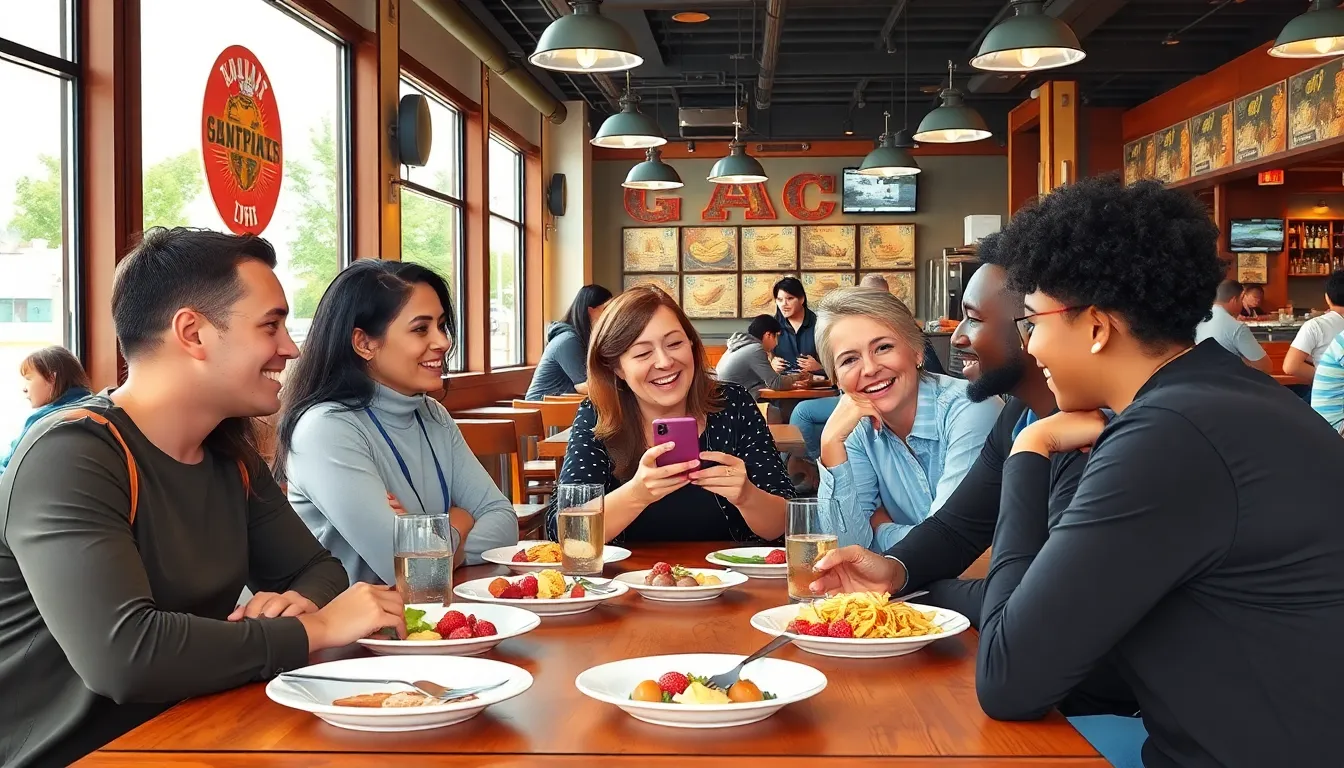Table of Contents
ToggleIn a world where food reigns supreme, eatery feedback is the secret sauce that keeps restaurants thriving. Imagine biting into a mouthwatering dish, only to find out it was inspired by a customer’s suggestion. That’s the power of feedback! It’s not just a polite nod; it’s a culinary lifeline that helps chefs whip up magic in the kitchen.
Importance Of Eatery Feedback
Customer feedback plays a vital role in shaping the restaurant industry. It directly influences various aspects like menu design and service quality, making it essential for restaurants.
Enhancing Customer Experience
Understanding customer feedback allows eateries to refine their services. Restaurants can tailor their menus to match preferences, ensuring a more satisfying dining experience. Dining establishments that listen to their patrons often notice improvements in service speed through direct input. Even minor adjustments, like seating arrangements or ambiance, can significantly elevate guest satisfaction. Implementing suggestions fosters a welcoming atmosphere that encourages repeat visits.
Building Brand Loyalty
Restaurants that actively seek feedback cultivate a loyal customer base. Engaging with patrons through surveys or comment cards shows appreciation for their opinions. When diners feel heard, they often become advocates for the restaurant, sharing positive experiences with friends and family. Consistent attention to customer suggestions can lead to enhanced trust. Loyal customers are more likely to return and contribute to a restaurant’s growth and reputation.
Methods Of Collecting Eatery Feedback

Collecting feedback is essential for understanding customer preferences. Various methods exist to gather insights effectively.
Online Surveys
Online surveys provide an efficient way to collect customer opinions. Surveys can be distributed through email, social media, or restaurant websites. Short, focused questions often yield better response rates. Using platforms like Google Forms or SurveyMonkey allows for quick data analysis. Customers appreciate convenience; offering incentives can increase participation. Many establishments also tailor surveys to specific events, capturing timely feedback that aligns with recent dining experiences.
Social Media Engagement
Social media serves as a dynamic channel for collecting eatery feedback. Restaurants can post questions or polls directly on platforms like Instagram, Facebook, or Twitter. Engaging with customers in real time fosters a sense of community. Quick responses help address any concerns, enhancing customer satisfaction. Tracking comments and direct messages provides critical insights into customer sentiments. Regularly monitoring mentions of the restaurant ensures timely feedback collection, enabling quick adjustments to improve service and offerings.
Analyzing Eatery Feedback
Analyzing customer feedback reveals useful insights into dining preferences and operational strengths. This process helps identify patterns in customer satisfaction and areas needing improvement.
Identifying Trends
Identifying trends within feedback allows eateries to spot popular dishes and common complaints. For example, if multiple diners mention a favorite appetizer, it might remain on the menu. Similarly, consistent remarks about slow service indicate the need for staff retraining or increased staffing during peak hours. By analyzing feedback over time, trends become clear, guiding restaurants in menu development and service enhancements. Tracking data from varied sources creates a comprehensive view of customer expectations and experiences. Utilizing analytics tools to monitor responses enhances the effectiveness of trend identification.
Addressing Common Concerns
Addressing common concerns swiftly builds customer trust and loyalty. When diners report issues like cold food or unclean tables, fast resolutions demonstrate commitment to quality. Restaurants often create action plans based on feedback summaries, ensuring consistent quality and improvement. For instance, restaurants might implement regular cleaning checks after receiving complaints about cleanliness. Additionally, engaging with guests directly increases satisfaction by showing that their opinions matter. Implementing changes based on feedback not only resolves issues but also improves overall dining experiences. Encouraging open dialogue further reinforces a restaurant’s dedication to listening and responding to its patrons.
Implementing Changes Based On Feedback
Listening to customer feedback drives meaningful changes in eateries, enhancing overall satisfaction and loyalty.
Menu Adjustments
Menu adjustments often stem from clear customer preferences. Trends highlight popular dishes, allowing restaurants to emphasize items that resonate with diners. Feedback indicating a desire for healthier options can lead to the introduction of new, nutritious items. Seasonal ingredients frequently work well too, as they resonate with local palettes. Diversifying the menu based on tastes promotes excitement and engagement. Diners appreciate when restaurants innovate while maintaining favorites. Regularly revisiting menu items ensures offerings align with evolving customer desires. Adjustments often encourage repeat visits and enhance the dining experience.
Staff Training
Staff training focused on customer feedback plays a key role in enhancing service quality. Identifying common issues, such as slow service or unfriendliness, informs targeted training programs. Improved training sessions emphasize effective communication and efficient service techniques. Engaging staff in discussions about feedback fosters a culture of accountability and improvement. Real-time feedback from customers can be incorporated into coaching practices. Investing in continuous development ensures a team that adapts to ever-changing customer needs. Happy, well-trained staff lead to better customer interactions, encouraging repeat customers and positive reviews.
Embracing customer feedback is essential for any eatery aiming to thrive in a competitive landscape. By actively listening to patrons and implementing their suggestions, restaurants not only enhance their menus but also improve service quality. This commitment to customer satisfaction fosters loyalty and encourages repeat visits.
Utilizing tools like online surveys and social media engagement enables eateries to gather valuable insights efficiently. Analyzing this feedback reveals trends that guide operational improvements and menu adjustments. Ultimately, a restaurant that values its customers’ opinions and acts on them paves the way for sustained growth and a stellar reputation in the dining community.







